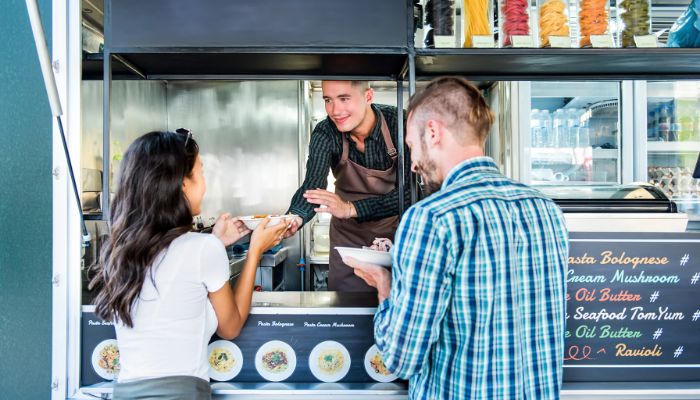How Food Marketing Impacts What We Choose to Eat
The food in your fridge and pantry doesn’t appear by accident. You purchase these items at the store because they’re your favorite goods. How do you choose what brand to buy at the store? You likely base these decisions on food marketing.
Food and beverage companies spend millions of dollars annually on marketing to get you to buy their products. How does marketing affect your food choices? These five examples demonstrate popular tactics.
1. Catchy Commercials and Slogans
Food marketing starts with TV. In 1941, a New York broadcast station aired a commercial for Bulova, a watchmaker. Since then, marketing campaigns have created thousands of catchy commercials to get you to buy their products.
Some memorable food advertisements include:
- Oscar Meyer: In the 1960s, Oscar Meyer debuted its song where children sing, “I’d love to be an Oscar Meyer.” For the past 60 years, the hot dog maker has recreated the commercial numerous times because the jingle is catchy and popular with children.
- Coca-Cola: In 1971, the Coca-Cola Company used its advertising agency to write the song “I’d Like to Teach the World to Sing (in Perfect Harmony.” Since then, Coke lovers have sung the song and associated the product with togetherness and sharing.
- Wendy’s: In 1984, Wendy’s started its “Where’s the beef?” campaign. The commercials feature elderly women driving around town asking rival restaurants, “Where’s the beef?” Wendy’s objective is to promote the amount of meat in each burger compared to McDonald’s, Burger King and others.
2. Celebrity Endorsements
Creative commercials are impactful, but the effects of food marketing are significant when companies use celebrity endorsements. When you see a celebrity endorse a product, you may elevate your perception of it and be more likely to buy it. Celebrity endorsements make you think that product is integral to their lavish lifestyle. Some celebrity food marketing examples include:
- Pepsi: Pepsi has used celebrity endorsements for its beverages for decades. In 1984, the company used Michael Jackson in the Pepsi generation commercial. In the modern era, Pepsi has signed stars like Beyoncé and Britney Spears to promote the brand.
- Smartwater: Smartwater’s goal is to stand out with superior hydration — so the company has used glamorous women like Jennifer Aniston, Gal Gadot and Zendaya to promote hydration and clear skin by drinking its water.
- McDonald’s: McDonald’s is the world’s top fast-food restaurant because of its food marketing. It’s had little trouble getting celebrities to appear on the screen and influence your food choices. Some recent examples include Travis Scott, Saweetie and BTS.
3. TV Shows and Movies
Sometimes, companies are more subtle with their food marketing. Product placement in TV and movies is an indirect way to influence your purchasing decisions. The actors and actresses may never mention the food or beverage by name, but you’ll associate them together. Famous examples of product placement include:
- Friends: The iconic ‘90s sitcom uses product placement throughout its 10 seasons. You can see the cast drinking beverages like 7Up, Coca-Cola and Snapple.
- James Bond: James Bond films have long done product placement for Aston Martin. Though, recent films have featured Heineken beer. For example, in “Skyfall,” Bond gives away Heinekens and does tricks with the bottles.
- Seinfeld: The Jerry Seinfeld and Larry David comedy has an episode titled “The Junior Mint.” The plot involves Jerry and Kramer observing a surgery while Kramer eats Junior Mints. During the operation, Kramer accidentally drops a piece of the candy inside the patient.
4. Nutritional Claims
Pop culture significantly influences what you eat. Another persuasive tactic is using nutritional claims. The effects of food marketing are critical when products tell you they’re healthy. For example, you may see an advertisement for yogurt declaring it improves gut health because of probiotics.
Rules and regulations monitor these products to ensure they’re not misleading you. Still, it’s wise to be vigilant when seeing food marketing campaigns. Brands have faced scrutiny for their misleading advertising. Well-known instances include:
- Red Bull: For decades, Red Bull has told customers the energy drink will give them wings. In 2014, the company had to shell out $13 million in a class-action lawsuit after dubious claims of enhancing performance.
- Frosted Mini-Wheats: Cereal companies have often targeted children, giving them a tasty breakfast before school. In 2009, Kellogg’s faced scrutiny for its branding of Frosted Mini-Wheats, saying the cereal would improve attentiveness by 20%. The claims had no scientific backing, leading to a $4 million settlement.
- Cheerios: General Mills also faced reprimand for its cereals. The company said Cheerios lowered cholesterol and reduced the risk of heart disease. However, the claims had no backing, forcing General Mills to adjust the branding.
5. Social Media Campaigns
Social media has become a vital tool for food and beverage companies in the digital age. Brands want to connect with you and find new clients for their products. They use Facebook, Twitter, Tik Tok, YouTube and more to influence your food choices. Modern food marketing tactics on social media include:
- How-to guides: Suppose you want to learn how to barbecue. You go on YouTube or Tik Tok to find inspiration and watch a few videos. Some guides come from companies producing barbecue rubs, sauces, grills and more. You’ll learn how to make the recipe and be more inclined to purchase the product.
- In-video ads: You may be casually watching videos from your favorite content creators on YouTube. In the video, the creator stops to tell you about HelloFresh and the terrific meal delivery service. This tactic is similar to the celebrity endorsement — but it’s more intimate because the creator typically details the product and how they use it before returning to the video.
- Challenges: Social media users influence your food choices by creating challenges. The brand has nothing to do with the challenge, but they take advantage of it through an advertisement. You buy the product and participate because you don’t want to feel left out. For example, the Oreo challenge went viral a decade ago. Participants took an Oreo cookie and moved it from their foreheads to their mouths without using their hands.
- Social justice initiatives: Some advertising campaigns are serious. Brands often use social media to discuss social justice issues. Ultimately, their goal is to elevate your perception of the brand and buy their products. For example, companies may create videos about their efforts to combat racism and climate change.
- Crowd voting: Sometimes, brands invite customers to influence their products directly. They make you feel like you control the effects of food marketing on the grocery shelves. For example, Lay’s frequently has polls on their websites, allowing fans to pick the next limited-edition flavors. Oreo also crowd-sources suggestions for its cookies and announces new flavors on social media.
The Effects of Food Marketing in Your Kitchen
In the digital age, avoiding TV, movies and social media is tricky. When consuming the media, you’ll often find food marketing ads.
Look around your kitchen and see how much these advertising campaigns influence you. Do you have M&Ms in your pantry because of the Maya Rudolph ads? Does Taylor Swift persuade you to drink Diet Coke? Food marketing is clever and directly impacts what you choose to eat.



Comments are closed.